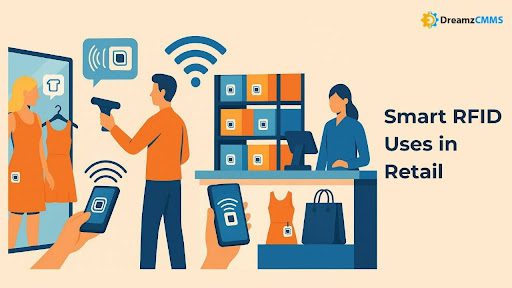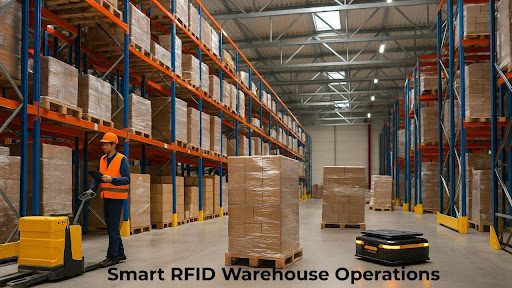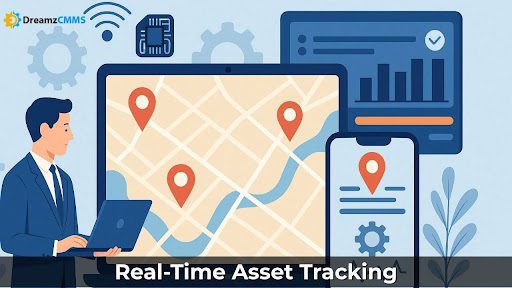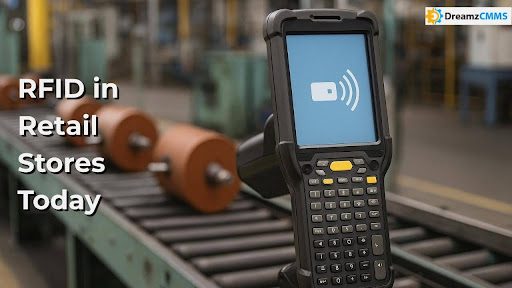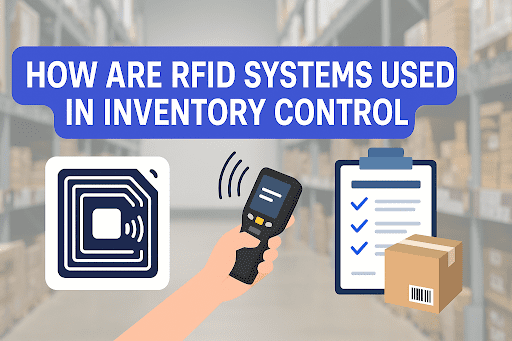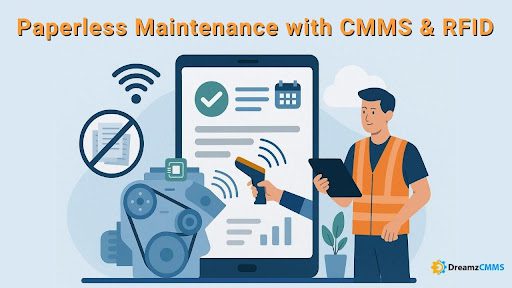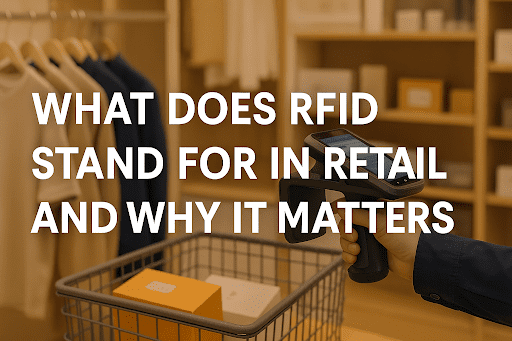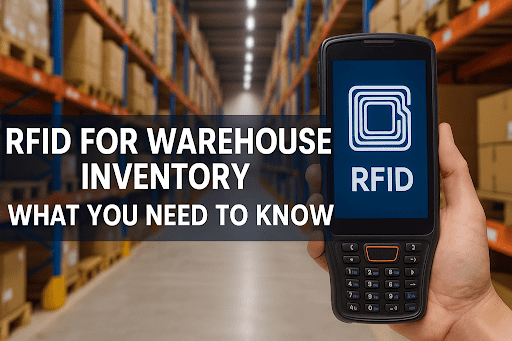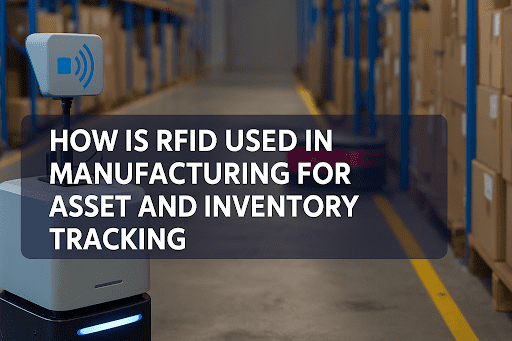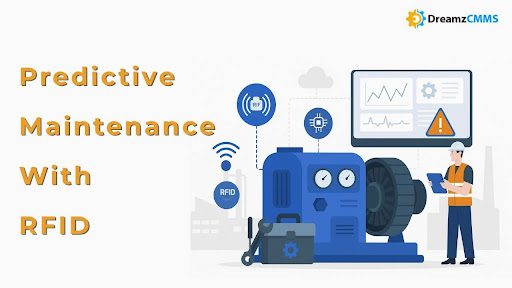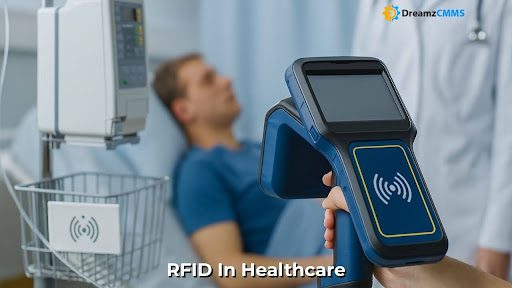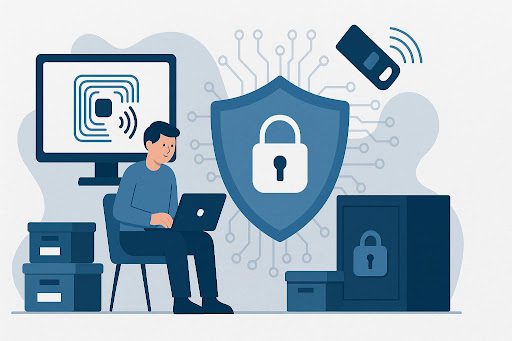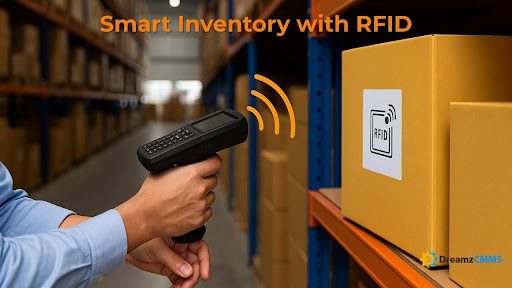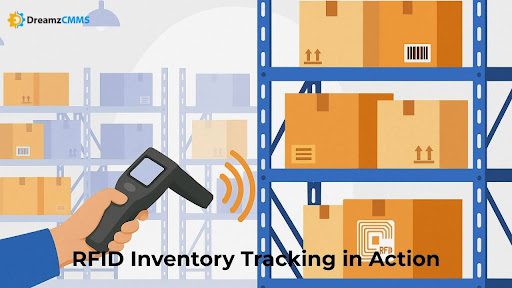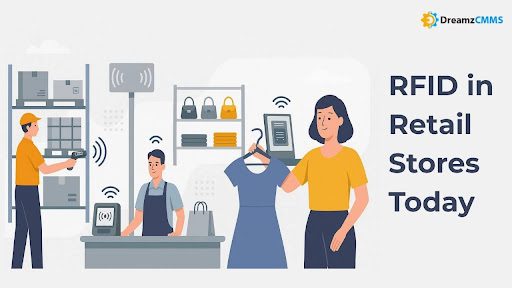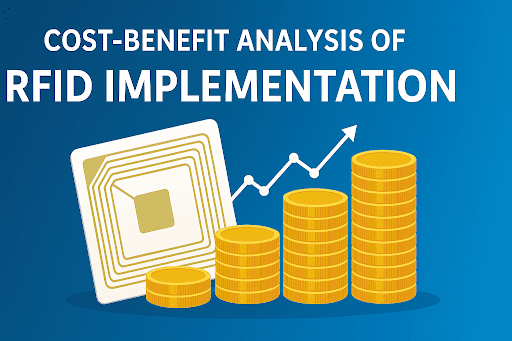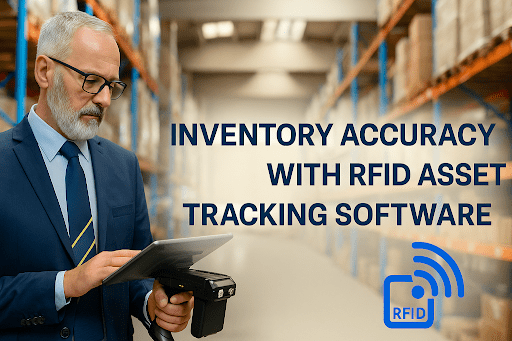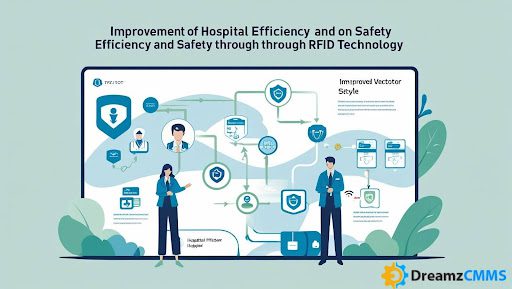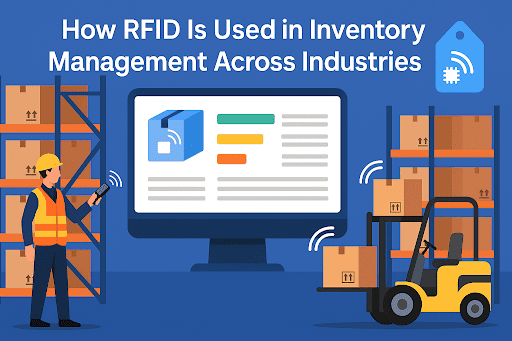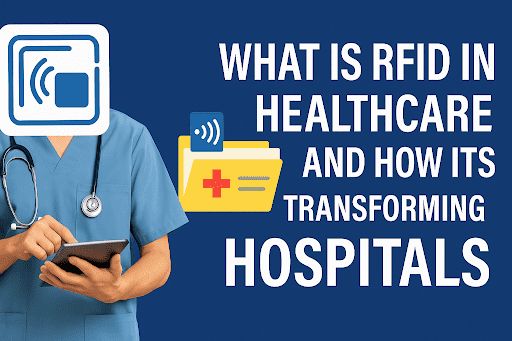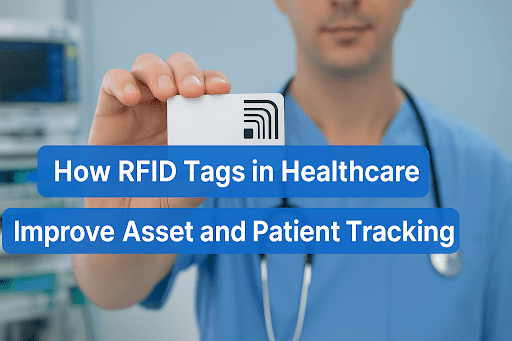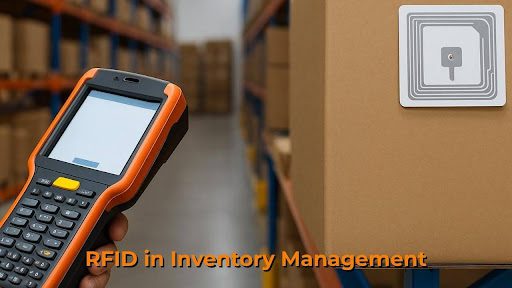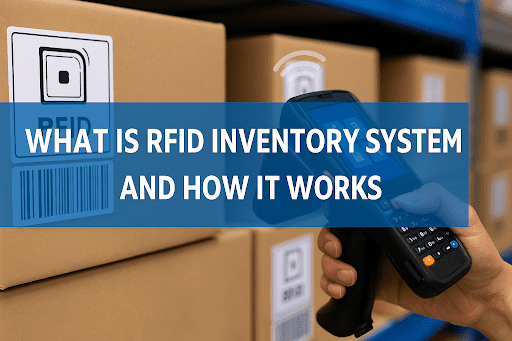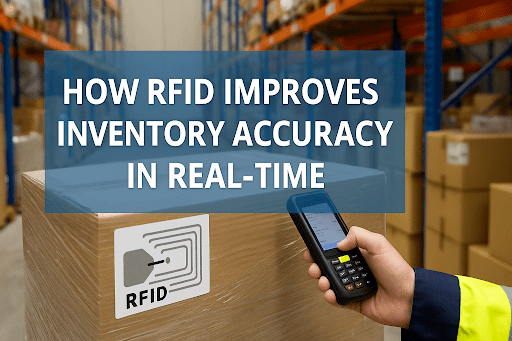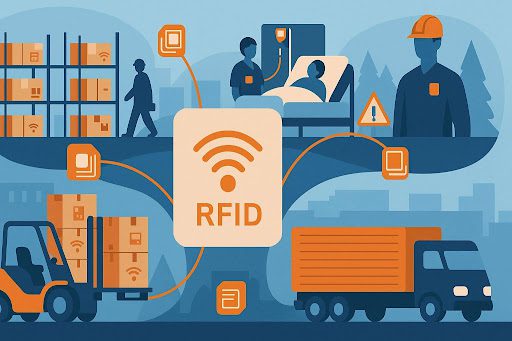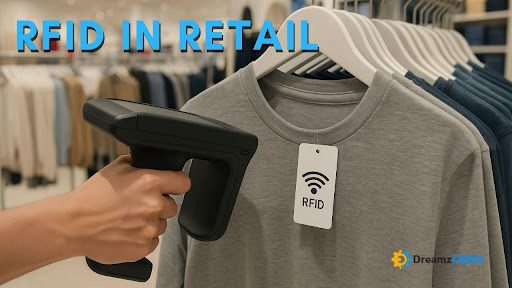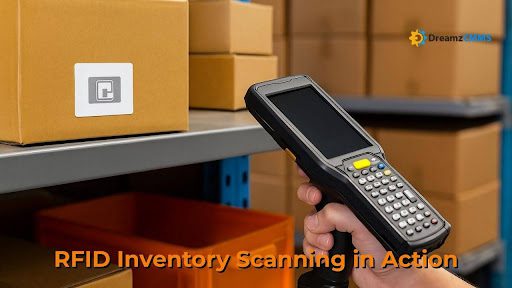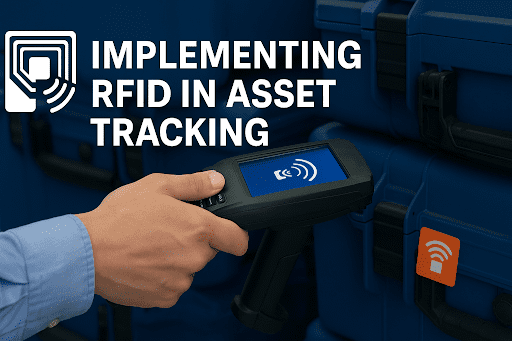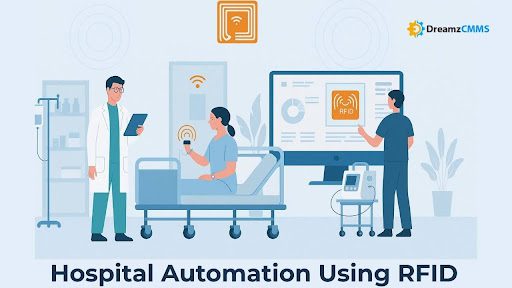 BACK TO Blog
BACK TO Blog
Asset Rental Management
RFID Asset Tracking
Modern threats to security require advanced access control measures to protect commercial facilities and industrial areas and institutional buildings. Modern security access control now uses RFID Access Control systems as a smarter technology which offers both scalability and effectiveness. RFID systems enable businesses to implement exact entry controls for facilities
- June 25, 2025
- DreamzCMMS Team
- 10 minutes read
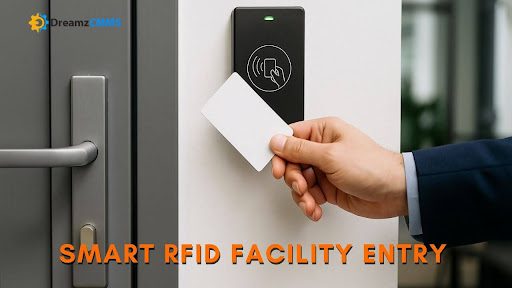
- June 25, 2025
- DreamzCMMS Team
- 10 minutes read
Modern threats to security require advanced access control measures to protect commercial facilities and industrial areas and institutional buildings. Modern security access control now uses RFID Access Control systems as a smarter technology which offers both scalability and effectiveness. RFID systems enable businesses to implement exact entry controls for facilities by identifying authorized personnel at specific times.
RFID door entry systems have established themselves as the primary access management solution for businesses ranging from small offices to enterprise campuses and high-security zones. This extensive overview explains RFID access control fundamentals including system operation mechanisms and advantages alongside system components and selection procedures for your facility.
Related: RFID Tracking System
Explore: Facility Management Software
Take Control with RFID Asset Tracking Software
The advanced RFID technology provides real-time asset tracking along with monitoring and security functions for contemporary facilities.
The system provides precise tracking while decreasing losses and delivering complete visibility across your entire operation.
What is RFID Access Control?
A building entry system which grants or restricts access by utilizing Radio Frequency Identification (RFID) technology. The system requires users to possess an RFID tag (or card) and entry points must contain reader devices. When an RFID card approaches the reader the system verifies its credentials before either opening the door or blocking access.
The contactless access control solution provides both faster operations and better hygiene than traditional methods along with real-time logging capabilities and centralized management features. Organizations can implement RFID-based security systems for safety protection without sacrificing user convenience.
How RFID Door Entry Systems Work
RFID door entry systems use synchronized components to create networks that provide both secure and efficient access control functions. The system depends on all its parts to deliver correct and efficient authentication. Here's how the system functions step by step:
RFID Cards or Badges
The organization distributes RFID-enabled badges or ID cards to authorized personnel who include employees and contractors as well as visitors. The microchips embedded in these cards maintain particular user identification codes. The RFID card sends its credentials through radio frequency when users place it near the reader. The RFID badge access systems provide lightweight and portable security features which make them suitable for efficient access permission management.
RFID Card Readers for Access Control
The RFID card readers function as access control devices which are placed at entry points such as doors and gates. The devices function to detect RFID cards in close proximity then extract information stored in the cards. The RFID reader technology exists in multiple ranges starting from small door access systems and extending to larger systems used for parking facilities and perimeter security. After the card detection the reader transfers its data to the central control panel for verification purposes.
Access Control Panel
The RFID access control system depends on this device as its central control center. The RFID card reader sends the detected card data to the control panel for verification against stored authorized credentials. The system uses established access rules and permission settings to perform rapid authorization decisions between access approval and denial. Modern advanced systems use this panel to send alerts and log audit information and provide real-time security notifications to staff.
Management Software
The RFID door entry ecosystem receives its entire management through a user-friendly software interface. Through its cloud-based RFID access control platform administrators can establish access roles and set permissions and remove access rights while generating instantaneous reports. The software system allows users to control single offices or multiple sites through centralized management with adaptable functionality and extensive growth potential. The system provides real-time access tracking through RFID technology which automatically logs every entry and exit event to fulfill security and compliance requirements.
The system uses these elements to build a complete RFID-based security framework that enables secure contactless and intelligent access control for current facilities.
Cloud-based RFID access control provides system scalability to enable remote administration of various locations. Enhance operational control with Asset Maintenance Management Software Enhance operational control with Asset Maintenance Management Software
Learn more: Implementing RFID in Asset Tracking
Benefits of Secure Facility Access Using RFID
The implementation of secure facility access through RFID technology provides numerous operational and security advantages to facilities.
1. Enhanced Security
RFID-based systems deliver an authentication method which clones and manipulation attempts become very challenging. The security of the access process becomes more robust when using RFID authentication alongside biometric or PIN code verification.
2. Real-Time Access Tracking with RFID
The system enables administrators to track employee activities in real time as they respond to any unusual behaviors. The level of oversight required in regulated industries including finance, healthcare and government remains crucial.
3. Workplace Access Monitoring
The system shows employee entry points along with time stamps to support workplace safety regulations and HR auditing requirements.
4. Automated Facility Entry Management
The use of manual sign-in records combined with keys leads to mistakes and unauthorized usage. RFID-based automated entry management systems reduce security entry delays by providing unattended access solutions.
5. Contactless Convenience
The necessity to reduce touchpoints became increasingly important after the pandemic. The RFID technology enables touchless access control solutions that prevent germ transmission and enhance speed at entry checkpoints.
Explore: Inventory Accuracy with RFID Asset Tracking Software
Smart Access Control for Buildings: Future-Ready Infrastructure
The development of smart buildings drives up the implementation of smart access control solutions in building management. Building management systems work harmoniously with RFID systems to connect with lighting and HVAC systems and emergency response protocols.
IoT-Based Access Control Systems
Centralized control becomes possible through IoT-based access control systems which enable sensors, cameras and RFID readers to communicate through internet connections. The system issues alerts when unauthorized entry attempts occur and door positions exceed designated timeframes.
Cloud Integration and Mobile Access
The administration of permissions through cloud-based RFID access control can be accessed by administrators from any device and from any location. Mobile-based RFID authentication emerges as a substitute for traditional plastic cards by implementing digital credentials through smartphones.
Ideal for modern leasing: Asset Rental Management Software
Use Cases Across Industries
RFID technology for facility entry operates independently across different sectors. Its applications span multiple industries:
1. Corporate Offices
The system enables attendance tracking for employees while it restricts access to restricted areas. Through RFID employee access logs payroll automation and performance monitoring become possible.
2. Healthcare Facilities
The combination of RFID access control systems helps maintain hospital hygiene standards while safeguarding medicine storage and patient records and laboratory areas.
3. Educational Institutions
An RFID badge access system enables staff to monitor student attendance while controlling dormitory entry and limiting access to exam halls and lab facilities.
4. Warehousing and Logistics
The system enables staff location tracking and integrates with inventory management systems for complete site monitoring.
5. Manufacturing Plants
The system restricts entry to dangerous areas and implements multiple permission levels between visitors and operators and supervisors.
Features to Look for in an RFID Access Control System
The selection process demands both present operational needs and projected expansion potential evaluation. Here are essential features:
- Scalability: Cloud-based and modular systems support multiple locations.
- User-friendly Dashboard: The software interface allows administrators to create access rules with simplicity.
- Audit Trails: The system maintains detailed logs that help organizations meet audit requirements and conduct investigative procedures.
- Multi-Factor Authentication: Security levels increase when RFID access functions alongside biometric authentication and mobile OTP verification.
- Fail-Safe Mechanisms:Emergency access remains accessible during power outages and all other times.
- Integration Capabilities: The system supports integration with HRMS and payroll systems and video surveillance and fire safety systems.
Integrated RFID Access and Time Tracking
The greatest advantage of RFID technology lies in its capability to merge access management with time tracking within a unified system. Employees access time tracking functions through RFID badge scanning which minimizes paperwork and enhances data precision.
Overcoming Security Challenges with RFID-Based Systems
Security issues such as card duplication and unauthorized following as well as lost identification cards remain valid problems which have practical solutions. Modern systems resolve these security issues in the following way:
- Encrypted RFID protocols protect against cloning and replay attacks.
- The system of anti-passback rules prevents users from making more than one entry with the same credential.
- The system activates video verification to verify faces against ID credentials during access attempts.
- The system allows visitors to receive time-limited access with restricted areas that must be exited before their access period ends.
Real-Time Access Monitoring and Alerts
An advanced RFID badge access system tracks patterns in addition to logging entry activities. The system generates alerts which administrators receive through SMS and email notifications when unusual access patterns such as multiple zone access or off-peak time access occur.
RFID-based real-time access tracking serves two purposes of security and operational efficiency through these features.
Best Practices for Deploying RFID Access Control
The following implementation recommendations will help you achieve success with your RFID-based security system:
- Develop Access Zones according to the roles and duties of your employees.
- The first step is to inspect all access points and potential integration areas in the site.
- Users need training about RFID badge usage and card loss reporting procedures.
- Regular Maintenance: Test readers and update software to avoid outages or breaches.
- Backup Protocols: Manual override procedures need to be established in case the RFID system fails.
The Rise of RFID in Hybrid Workplaces
RFID card readers for access control help organizations implement hybrid work models by managing office attendance and controlling desk usage. Through its integration with workplace analytics RFID systems help HR teams and facility managers enhance employee experience while maintaining compliance with occupancy limits and optimizing office layouts.
RFID systems also facilitate:
- Touchless visitor check-ins
- Customized employee access schedules
- The system integrates with booking systems used in co-working spaces.
This change explains why workplace access monitoring through RFID has become a core component in contemporary office design.
Cost Considerations and ROI
The initial investment for RFID systems results in substantial long-term return on investment (ROI):
- The system decreases the number of personnel required at entry points.
- Security breaches become less frequent with this system.
- Automated attendance systems
- Faster emergency evacuations
- Less hardware replacement due to contactless usage
Cloud-based RFID access control provides flexible pricing options through subscription models while removing the requirement for costly on-site servers.
Final Thoughts: Embracing the Future of Secure Access
The current business environment requires RFID access control as an essential security measure rather than an optional feature. RFID provides secure and efficient access management which adapts to future needs for buildings of all types including high-rise corporate facilities and manufacturing plants and healthcare centers.
The implementation of RFID facility entry systems provides multiple advantages including real-time monitoring and automated time tracking together with seamless scalability and enhanced security compliance. The integration of RFID with IoT and cloud technologies creates the fundamental system of a modern smart building infrastructure.
Ready to Secure Your Facility with Smart RFID Access?
Discover how DreamzCMMS can help you streamline access control, improve security, and enable real-time visibility across all entry points.
Get your complimentary demo today to begin your journey toward advanced facility management.
Ready for More?
Talk to one of our CMMS experts and see how DreamzCMMS can simplify your maintenance operations.
Book a free consultation